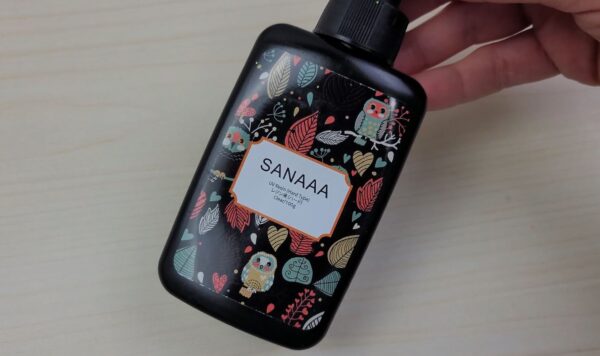13 Reasons Why Resin Is Yellowing [And Fixes]
Here is why your resin is turning yellow. Using epoxy resin and UV resin is getting more popular every day.
For those crafting jewelry, preserving memories in a beautifully cast tabletop, or making woodworking creations, epoxy resin has likely found its way into your craft room and online shops.
However, there’s a common issue that can put a damper on your resin projects over time, the dreaded yellowing effect.
Have you ever noticed that your once crystal-clear epoxy resin masterpiece has taken on an unsightly yellow hue? Don’t fret; you’re not alone.
This can be disheartening, I know. Understanding why epoxy resin turns yellow and learning ways to fix and slow it down it can be helpful for resin artists and users.
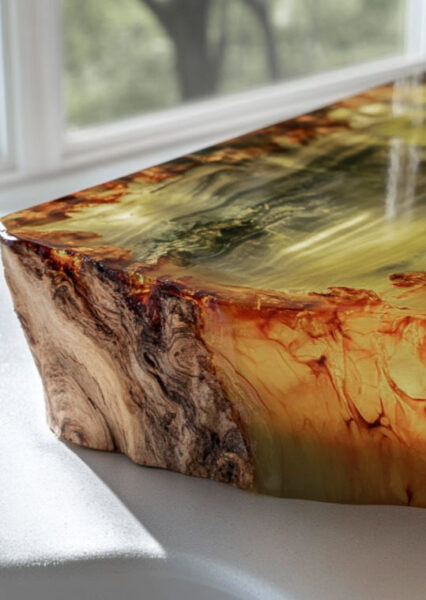
In this blog post, I’ll talk about the science behind epoxy resin’s yellowing. I’ll share factors that contribute to resin turning yellow. And, most importantly, share fixes to restore your resin.
So, let’s unravel the mystery of epoxy resin yellowing and learn how to keep your projects looking their best.
Why Resin Is Turing Yellow
Why does epoxy resin turn yellow? Epoxy resin can turn yellow due to several factors. This includes exposure to UV light, incomplete mixing, high humidity during curing, heat exposure, aging, and the use of low-quality materials.
Slowing down yellowing involves using UV resistant epoxy, thorough mixing, working in a controlled environment, storing your projects away from heat and light, and using high-quality resin.
Unfortunately, after working with all kinds of resin over the years, I have found that resin will yellow over time. In the bottles for two part resin, you will find that the hardener will usually change color first followed by the resin.
This is the number one reason why I would not recommend pouring a faux white marble countertop with resin, after a few years or even months, your countertop can start to turn yellow. If this is a concern, you might want to go with a darker color combo instead of pure white.

1. UV Exposure Turns Resin Yellow
One of the primary culprits behind resin yellowing is prolonged exposure to ultraviolet (UV) light. UV rays can break down the chemical bonds in epoxy resin, causing it to turn yellow over time.
Resin projects displayed in direct sunlight or under UV lamps are particularly susceptible to this issue. This is particularly disheartening when you are covering original paintings with resin.
How can I protect my resin projects from UV-induced yellowing?
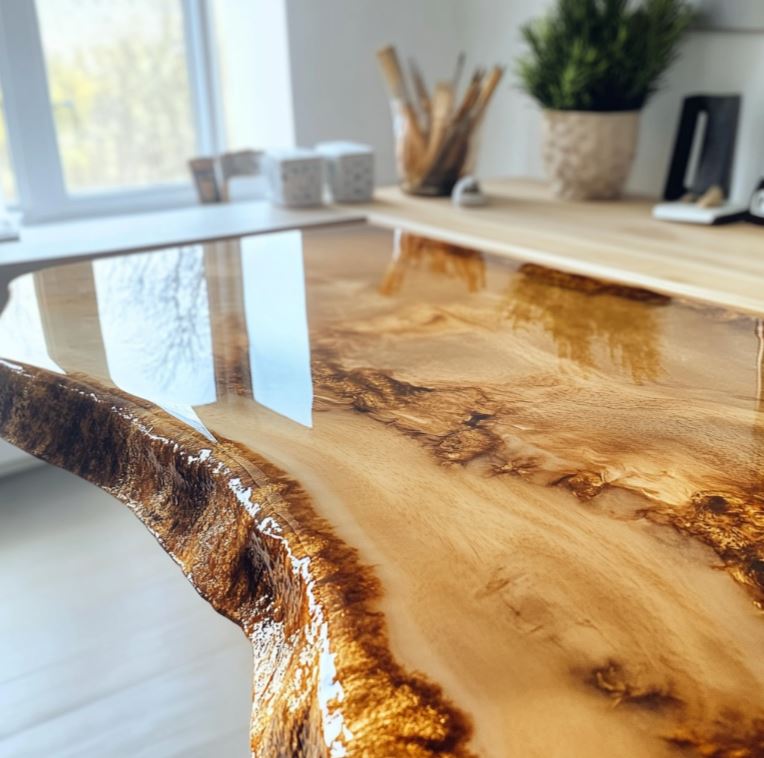
To protect your resin from UV induced yellowing, use UV resistant epoxy or apply a UV-protective topcoat. Both methods act as barriers against UV rays, helping to preserve the clarity of your resin creations longer, even when exposed to sunlight.
There are many non yellowing epoxy brands with stabilizers in the formula that will help slow down yellowing resin over time. Two brands that have good formulas are Craft Resin and Stone Coat Countertops.
2. Incomplete Mixing
Inadequate mixing of epoxy components, including the resin and hardener, can lead to yellowing.
This happens because unreacted molecules within the mixture can become discolored when exposed to various environmental factors.
To avoid this, do a thorough and consistent mixing of your epoxy, paying close attention to proper ratios and stirring techniques.
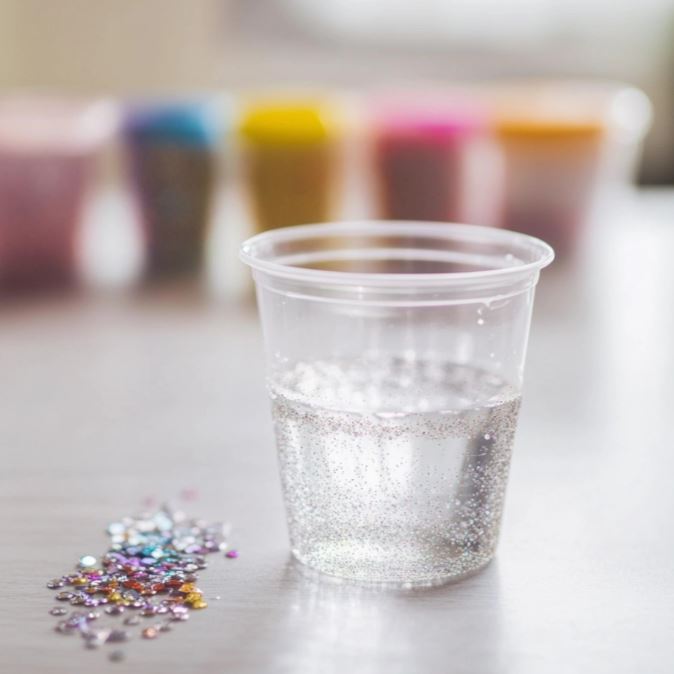
What’s the importance of proper mixing in preventing yellowing? Proper mixing is needed to prevent yellowing since incomplete mixing can lead to unreacted molecules in the resin. This can certainly be the cause of resin turning yellow more quickly.
Follow the manufacturer’s instructions for mixing ratios and techniques for a complete chemical reaction.
3. Humidity and Moisture
High humidity levels during the curing process can trigger yellowing in epoxy resin. Excess moisture can react with the epoxy and cause it to become discolored.
It’s very important to work in a controlled environment with proper ventilation and humidity levels, so that moisture doesn’t negatively impact your resin projects.
Yellowing epoxy can sometimes be triggered by moisture.

How does humidity affect epoxy resin yellowing? High humidity levels during the curing process can introduce moisture into the resin, leading to yellowing.
Working in a well-ventilated, low-humidity environment and using a dehumidifier if necessary will help mitigate this risk.
4. Heat Exposure can turn resin yellow
Elevated temperatures can accelerate the chemical reactions within epoxy resin, causing it to yellow prematurely.
One project I worked on had way too much heat when I applied the heat gun to pop the bubbles. I knew I was using too much heat because the resin started to bubble.
The epoxy turned yellow within 6 months and it looked terrible. It was one of the first times I used resin and I definately learned from that mistake.
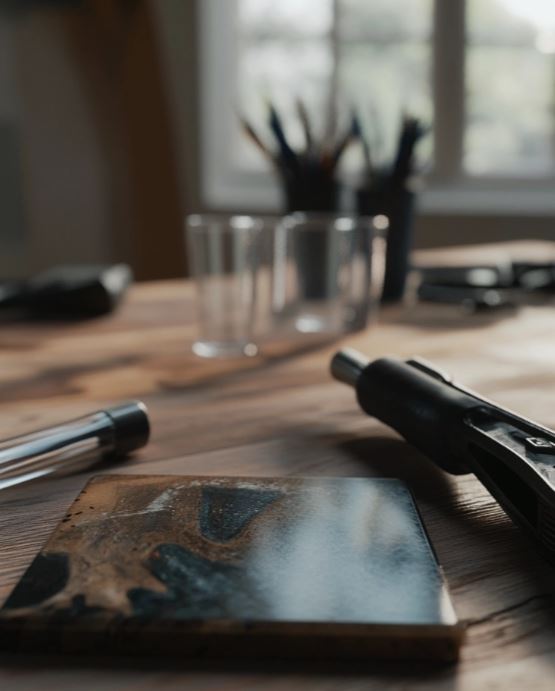
When using a torch or heat gun be sure to keep if far away enough so that the resin does not burn.
Also, avoid placing your epoxy creations near heat sources, such as ovens or radiators, and store them in a cool, dry place to maintain their clarity.
5. Resin That Is Aging can turn yellow
You might be wondering why is my resin hardener yellow? Over time, epoxy resin naturally undergoes chemical changes, leading to yellowing.
So to answer your question, does epoxy yellow over time, the answer is yes.
While this aging process is inevitable, proper storage in a dark, temperature-controlled environment can slow down the yellowing process. If you sell jewelry, let your customers know that they should be storing their pieces away from light.
Check your expiry dates on the resin and hardener. Resin that has expired will turn yellow and sometimes have a stronger odor that usual.
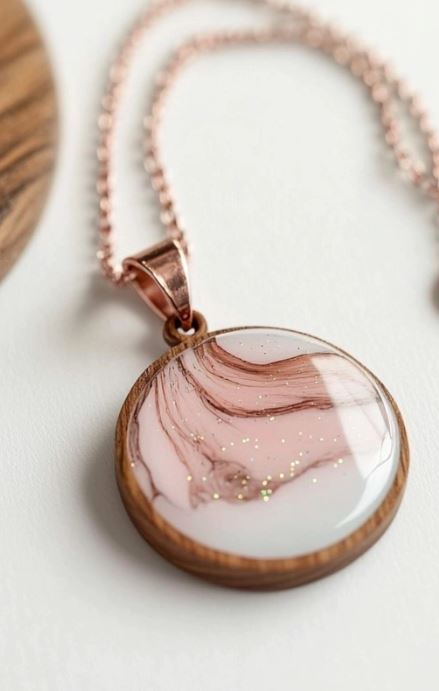
Can yellowing be reversed once it occurs? Unfortunately, once epoxy resin has turned yellow, it’s challenging to reverse the process. Prevention is the key.
However, you can sometimes improve the appearance by sanding the surface and applying a clear coat or UV-protective finish to minimize the yellowed appearance. But this is not going to take the yellowing away.
6. Low-Quality Resin Can turn yellow
Using low-quality epoxy resin or expired materials can result in yellowing. Invest in high-quality epoxy products from reputable manufacturers to ensure the longevity and clarity of your resin art.
Unfortunately once resin starts to yellow, there’s no reversing it. Not even sanding resin projects will help. Yellowed resin is one of those things that can’t really be fixed easily if at all.
Are there resin types less prone to yellowing? Look for resins that contain UV stabilizers, which are additives that help absorb or block harmful UV rays from the sun. These stabilizers prevent the UV light from penetrating and interacting with the resin. Here are three brands that use UV stabilizers.
Choosing these types of epoxy resin can reduce the risk of discoloration in your projects. Many crafters like to use the ArtResin brand for their projects too. To learn more about this brand, I have an ArtResin epoxy review and I talk about my personal experiences using it.
7. Air Bubbles can cause yellowing
Trapped air bubbles within the resin can cause focal points of yellowing, as they disrupt the epoxy’s uniformity.
To minimize air bubbles, use a heat gun or torch to remove them during the curing process, and pour your epoxy in thin layers. Just be sure not to scorch the resin like mentioned above.

Yellowed epoxy that is caused by air bubbles cannot be fixed once cured. But you can take steps to make sure your resin is free from bubbles.
A resin bubble remover can also be used on smaller projects.
8. Contact with Chemicals can cause yellowing
Epoxy resin can turn yellow when exposed to certain chemicals, such as ammonia or bleach. To prevent chemical-induced yellowing, avoid contact with these substances. So if you are cleaning your resin art, do not use anything but warm soapy water.
Can contaminants cause epoxy resin yellowing? Yes, contaminants from dirty tools or mixing containers can react with epoxy and lead to yellowing after pouring.

Regularly clean and maintain your tools and containers to prevent these issues. And only use your resin equipment specifically for resin.
9. Incomplete Curing of resin
Inadequate curing time or improper curing conditions can lead to yellowing. When I’m working on larger pieces, I like to make sure that the temperature is consistent which is why I don’t like to cure things outside.
If I’m using resin outside in my tent, I’ll take them back in and cover them with a box or something for the final cure.
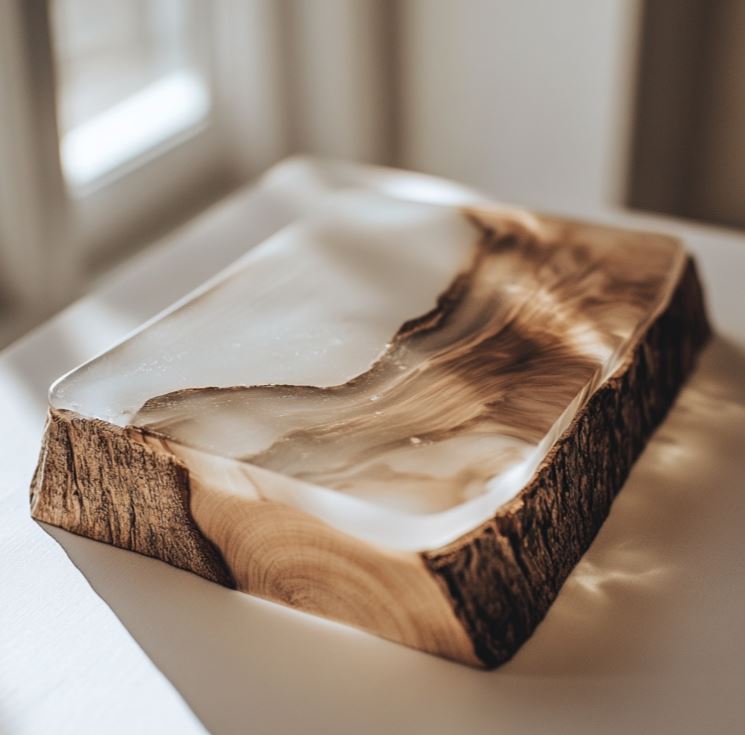
Follow the manufacturer’s recommendations for curing times and temperatures, as rushing the process can result in color changes. Especially when using UV resin and resin cure lamps.
10. Contaminated Tools and Mixing Containers
Resin mixing tools and containers that aren’t cleaned properly between uses can introduce contaminants that react with the epoxy, causing it to yellow.
Regularly clean and maintain your tools to prevent this issue. The best tools for resin are silicone because they can easily be cleaned and reused. I’ve worked with the Let’s Resin brand and their silicone tools and molds are good quality.
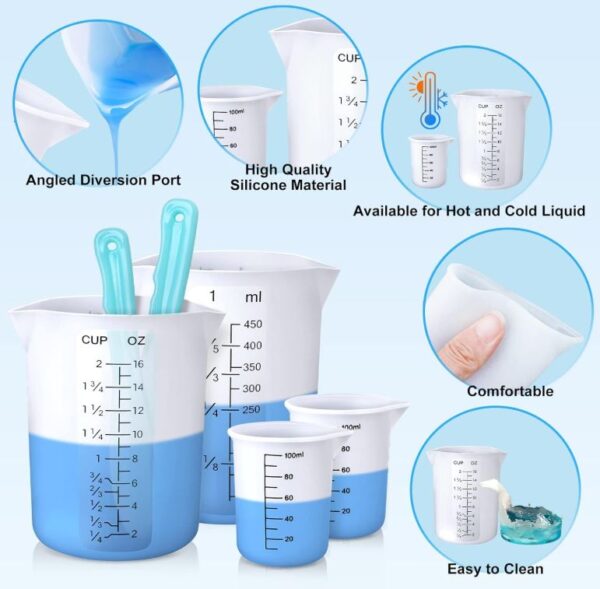
11. Inadequate Surface Preparation
When applying epoxy resin over surfaces that aren’t adequately prepared, like uneven or porous substrates, it can become discolored due to variations in curing.

If you are using a craft paint for a surface, it also needs to be a kind of paint that does not yellow over time. Your yellowing can be the paint underneath the resin starting to break down.
12. Too Much Pigment or Dyes
While pigments and dyes are what’s used to color epoxy resin, excessive amounts can lead to yellowing.
It’s important to use pigments and dyes in moderation and follow manufacturer guidelines to get the desired color without compromising clarity.
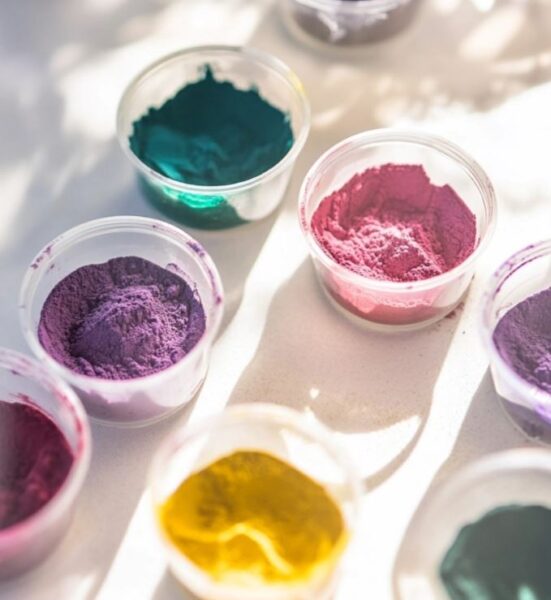
Also, when using paper in resin it’s super important to prepare paper for resin first to prevent bleeding of the inks.
Here’s a helpful guide on the best colorant ideas for epoxy resin as well as how to choose acrylic paints to add to resin to help you choose the right colorants.
I had a chance to try out some resin pigment paste from the Rolio Amazon Store and they are something that you might want to check out. They are very opaque and the colors can hide yellowing.

13. Reactive Wood Types
Certain wood types, like cedar and redwood, can release natural oils or acids that react with epoxy resin and cause it to yellow.
When working with such woods, consider using a sealant for wood or barrier coat to stop the interaction between the wood and epoxy.
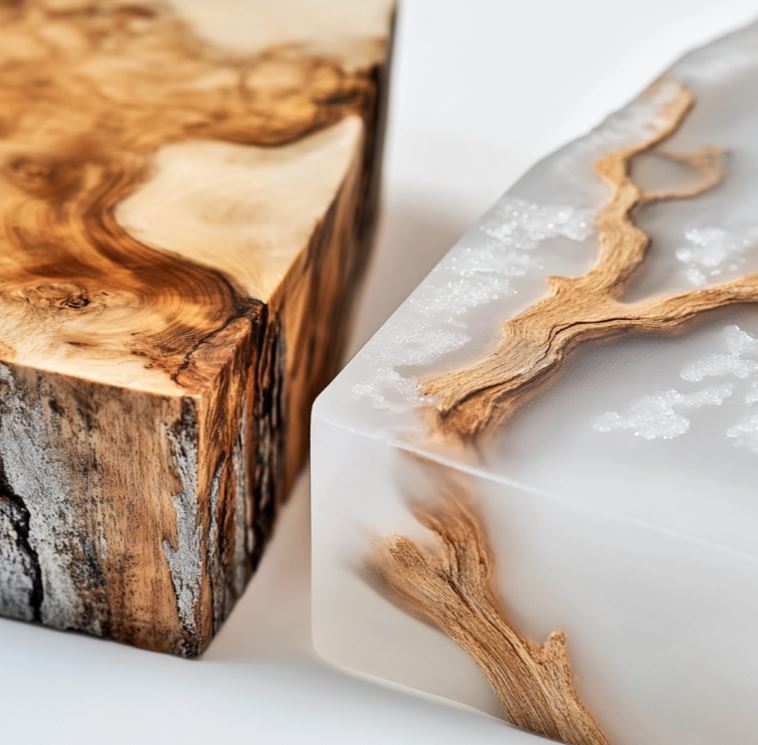
Ways To Stop Resin From Yellowing

How to slow resin yellowing
- Use a high end resin brand
- Work in a controlled environment
- Properly mix and measure components
- Store resin art away from heat and light
- Use epoxy with low color index
- Switch to darker colorant choices
What Is The Best Non Yellowing Resin?
The best non yellowing epoxy resin will be properly formulated with stabilizers to help the resin from turning yellow over time. Craft Resin is one of the top selling brands that has a great formula.
Tips to help slow down yellowing resin
1. Use UV Resistant Epoxy Resin
Get epoxy resin products that are specifically formulated to be UV resistant. These formulations contain additives that protect the resin from the damaging effects of ultraviolet (UV) light.
UV-resistant epoxy is good for projects exposed to natural or artificial sunlight, as it reduces the likelihood of yellowing over time. But do take note that it might not stop the resin from turning yellow after many years.
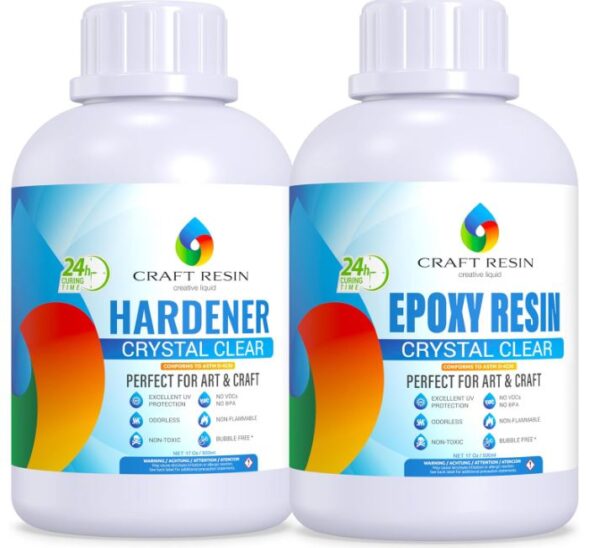
2. Work in a Controlled Environment
Maintain a controlled workspace with regulated temperature and humidity levels. High humidity and extreme temperatures can accelerate yellowing in epoxy resin.
Aim for a clean, dry, and well-ventilated environment to ensure the curing process occurs optimally and reduce the risk of discoloration and also your resin getting hot.
3. Properly Mix and Measure Components
To avoid yellowing due to incomplete curing or improper mixing, follow the manufacturer’s instructions for measuring and mixing epoxy components.
Make sure that the resin and hardener are combined thoroughly and in the correct ratios. If you are having a hard time mixing your resin properly, you can try a resin mixing machine.
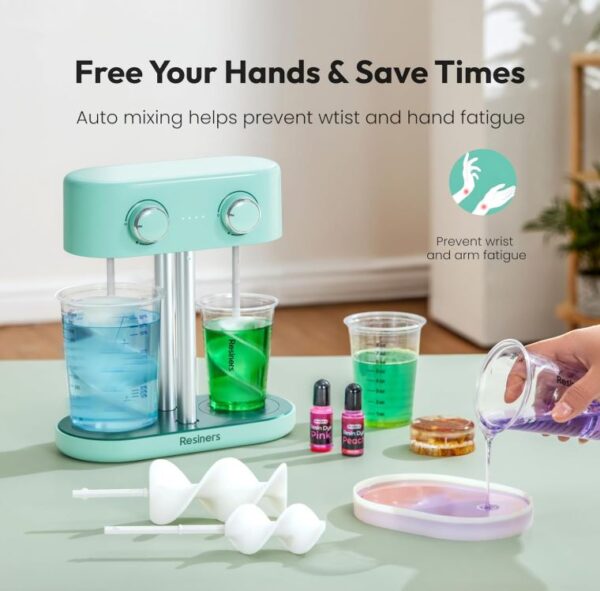
4. Store Resin Art Away from Heat and Light:
After your epoxy resin projects have cured, store them in a cool, dark area. Exposure to heat and prolonged light, especially direct sunlight, will cause yellowing over time.
Storing your resin art in a dim, temperature stable location will help preserve its original clarity.
See this article how to store resin.
5. Don’t Overheat The Resin
Never overheat it with a torch. Overheating resin can lead to various issues such as bubbles, burns, discoloration, or a rough surface finish.
It’s important to follow the manufacturer’s instructions and use a heat gun or a torch with a low-temperature setting if necessary.
Proper handling and temperature control will help you get the best results when working with resin for your projects.
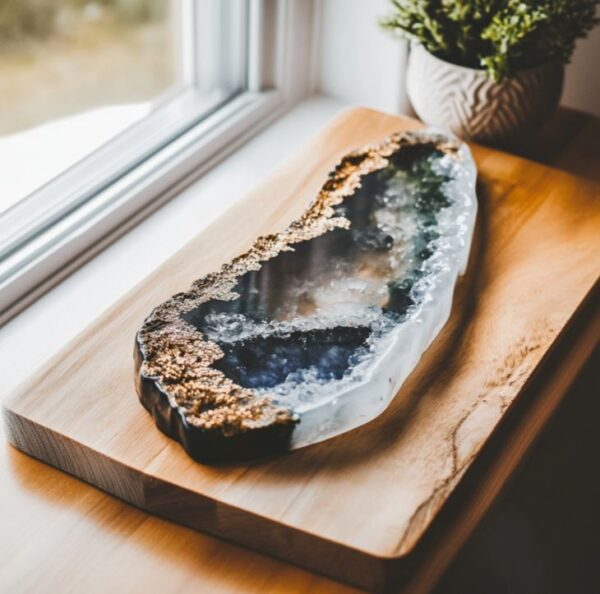
6. Use darker color pigments
You might want to switch your game plan by only offering darker colored projects. With all of the high end pigments, you can make all kinds of resin projects with colors like blacks and golds that hold up for long term use.
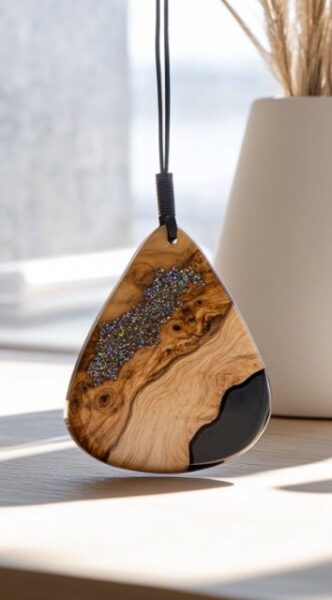
If you are selling resin art, resin jewelry, doing countertops it’s a good idea to let your customers know about yellowing over time. Or just switch to darker colors that mask the yellowing.
See this article about why white resin countertops are turning yellow.
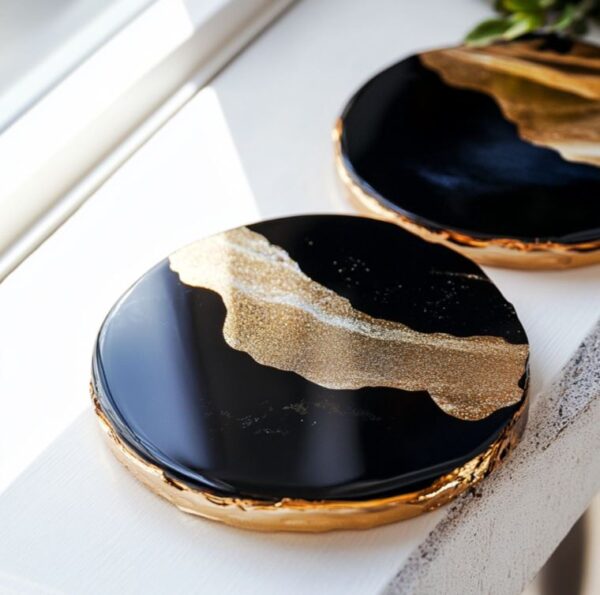

In Closing
Happy crafting and may your resin projects continue to shine brilliantly!
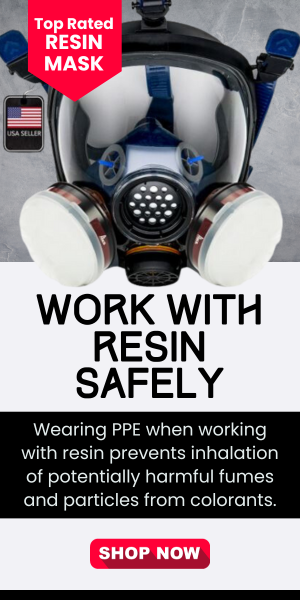

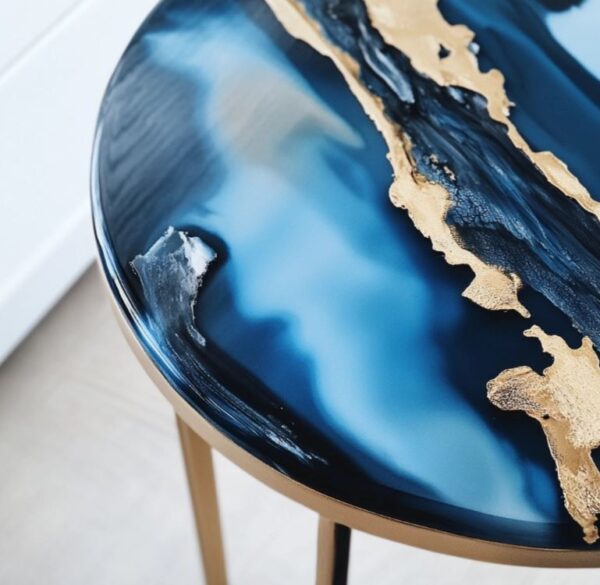
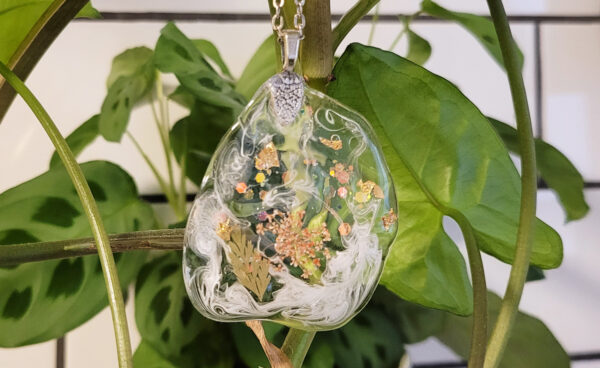

![11 Best Resin Starter Kits For Beginners [2025]](https://craftydiyartistry.com/wp-content/uploads/2023/11/best-resin-kits-for-beginners-cover-600x338.jpg)
